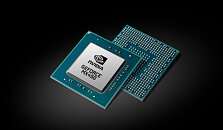Tuesday, August 25th 2020

NVIDIA Releases GeForce MX450 with PCI-Express 4.0 Interface
NVIDIA released a mysterious new mobile GPU that has us scratching our heads over the silicon that could be driving it. The new GeForce MX450 is an entry-mainstream mobile GPU that apparently ships with a PCI-Express gen 4.0 bus interface, something only NVIDIA's "Ampere" GPUs feature. The product page for the MX450 doesn't list out any other specs, than its memory type support including new GDDR6 memory (supported only on NVIDIA architectures "Turing" or later). Interestingly, it also lists GDDR5 as one of its memory options. PCI-Express 4.0 is prominently listed as one of its specs.
Upon digging some more among device IDs, we've come across the ID of the GDDR5 variant, with the ASIC code "GP107-670-A1," and the silicon is based on the much older "Pascal" architecture, which lacks PCIe gen 4 support. The GDDR6 variant eludes us. This is the SKU which could be based on a newer architecture, given its support for GDDR6 and PCIe gen 4. NVIDIA's GeForce MX line of entry-mainstream mobile GPUs are built to performance/power targets, and wildly vary with the underlying tech. They've been historically a means for NVIDIA to clear inventory of older generation ASICs to notebook manufacturers, who get put the NVIDIA logo on their products, and advertise discrete graphics. Given this, the use of a newer (even unreleased) generation of GPUs comes as a surprise.
Upon digging some more among device IDs, we've come across the ID of the GDDR5 variant, with the ASIC code "GP107-670-A1," and the silicon is based on the much older "Pascal" architecture, which lacks PCIe gen 4 support. The GDDR6 variant eludes us. This is the SKU which could be based on a newer architecture, given its support for GDDR6 and PCIe gen 4. NVIDIA's GeForce MX line of entry-mainstream mobile GPUs are built to performance/power targets, and wildly vary with the underlying tech. They've been historically a means for NVIDIA to clear inventory of older generation ASICs to notebook manufacturers, who get put the NVIDIA logo on their products, and advertise discrete graphics. Given this, the use of a newer (even unreleased) generation of GPUs comes as a surprise.


12 Comments on NVIDIA Releases GeForce MX450 with PCI-Express 4.0 Interface
Sounds like left over Volta to me.
But hey, gotta start somewhere I suppose...
PS
On the subject, given how amazing the 4xxx series mobile AMD chips are, NV needed to boost MX line, to stay relevant.
Although, I"m afraid, that relevance is still related only to the, at this point, hilariously overpiced Intel chips.